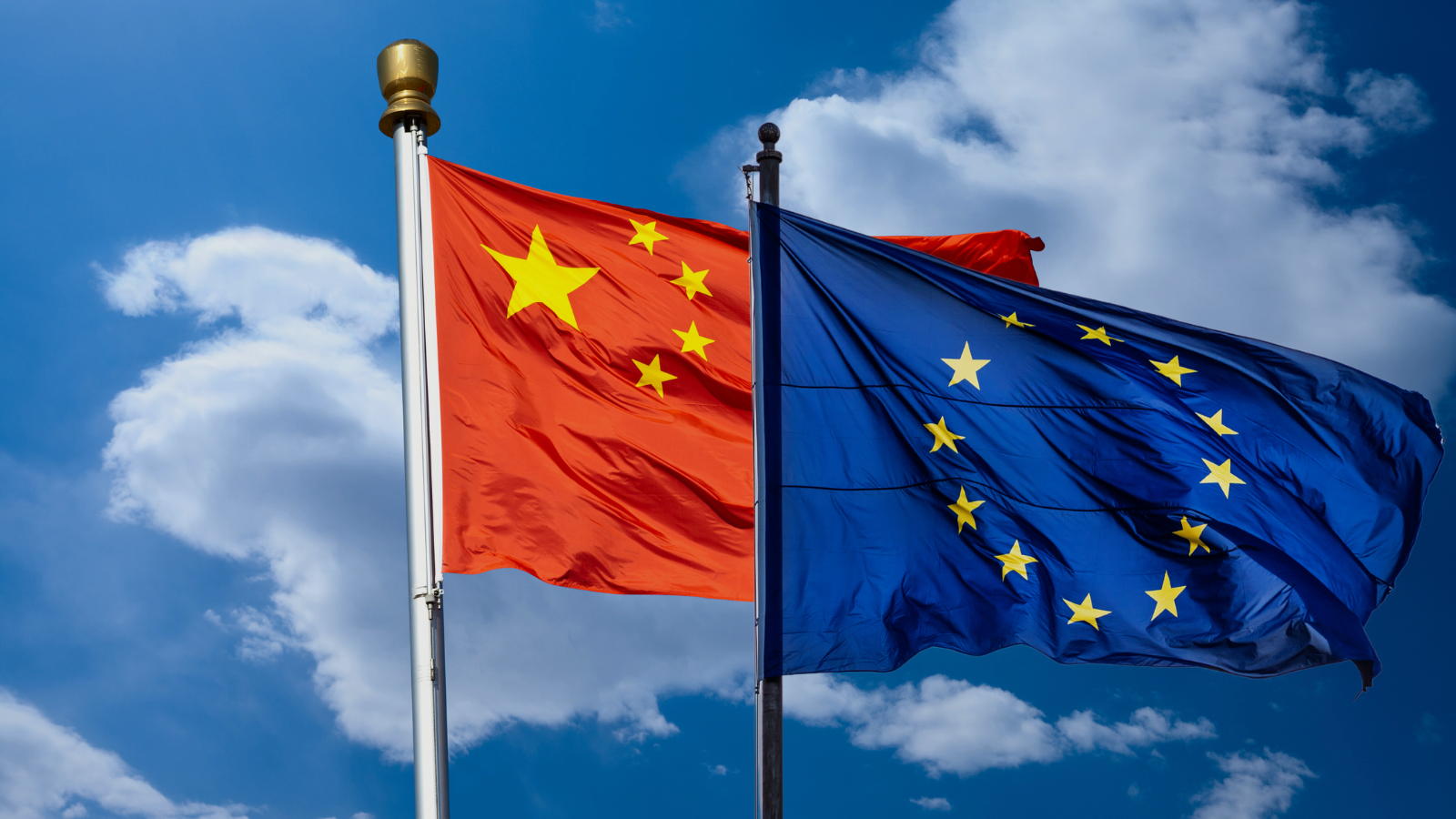Welcome to the 46th issue of the #CEEasia Briefing.
In this issue, we dissect the following topics:
- BRI Forum and Hungary’s pro-China stance
- Slovakia’s new government and its implications for China policy
- Czech defense strategy and its take on China
- Germany initiates minilateral cooperation with Central Asia
If you like what you see, please forward this message to your friends and colleagues who can subscribe here.
Do you need to know more about East Asia? Don’t hesitate to shoot us a message about custom analysis tailored to your needs.
1. Hungary reaffirms its pro-China stance during BRI Forum
What’s going on? China recently hosted a summit to mark the 10th anniversary of the Belt and Road Initiative. Notably, Hungary affirmed its pro-China stance at the event despite increasing skepticism in Europe about the BRI.
Going deeper… This year’s summit had the lowest number of participants to date. Among the EU leaders, only Prime Minister Viktor Orbán attended, along with leaders like Putin, the Afghan Taliban, and other leaders from the global south. This is a departure from the first two forums, where European leaders from the Czech Republic, Greece, and Italy were present. It reflects China’s struggles to gain traction with the BRI in Western Europe and suggests declining enthusiasm for the initiative in the EU. Indeed, several EU member states have become less willing to grant China access to their critical infrastructure in recent years.
However… Hungary remains open to cooperation with China in telecommunications and transport infrastructure, aligning with its broader goals under its “Eastern Opening” foreign policy strategy. At the summit, China introduced its new vision for the BRI, focusing on links between green development, the digital economy, and energy, among others outlined in its white paper. Orbán has consistently supported the BRI and in a personal meeting with the Chinese leader, reaffirmed Hungary’s commitment to be a trusted partner of China within the EU.
Still… Despite Hungary’s record-high FDI resulting from Chinese investment, concerns have arisen about potentially risky projects such as the Budapest-Belgrade railway, which heavily relies on Chinese loans. Chinese investments in battery production for electric vehicles in Hungary or maintaining a strategic partnership with Huawei have also raised concerns. That said, Hungary’s economic relations with the EU still surpass those with non-EU countries regarding trade value.
This means… The Belt and Road Summit underscores Hungary’s distinctive foreign policy stance, which contrasts with the European Commission’s strategy of decoupling and reducing risks in its dealings with China. While economic ties with China benefit Hungary, participation in BRI projects brings potential risks and consequences.
2. Slovakia’s new government and its China policy
What’s going on? Few days prior to the presidential swearing in of Slovakia’s new government, the future Prime Minister Robert Fico criticized the “static” orientation of Slovakia’s foreign policy. This came in a seeming response to the country’s non-participation at this year’s BRI summit in Beijing.
Going deeper… Fico appears to have criticized the normative turn in the previous government’s foreign policy that has led to increasing skepticism of the country’s relations with China. This is in seeming continuation of his party’s (SMER-SSD’s) electoral rhetoric that has distanced itself from several of the EU’s official foreign policy stances, albeit this was mainly in relation to Russia and its invasion of Ukraine. The issue of China has been significantly less salient in SMER’s campaigning, similarly to other parties in Slovakia and across CEE. At the same time, there are several politicians within the party (the most cited example being Ľuboš Blaha) who have continuously expressed their support for Slovakia’s strong relations (both political and economic) with China.
Nevertheless… Disregarding Fico’s vows to pursue a more pragmatic and independent foreign policy similar to that of Viktor Orbán, the general orientation of Slovakia’s foreign policy is likely to remain pro-European and Atlanticist in action while maintaining a critical tone of discourse on EU and USA. Indeed, Fico’s previous term in office saw him becoming increasingly disillusioned with the Slovak-Chinese economic relations, with the evocation of strong ties between the two countries becoming a mere rhetorical tool for criticizing the opposition’s push for a more values-based foreign policy rather than any sober evaluation of the nature of the relationship.
This means… Although the new government’s foreign policy is likely to prioritize interests over values, and thus become less hawkish towards both Russia and China, the current state of EU-China relations, as well as the broader international environment will limit the extent to which we are likely to see any substantive shift in Slovakia’s China policy.
3. Czech defense strategy and its take on China
What’s going on? The Czech Ministry of Defense has published its updated Defense Strategy, replacing the previous one from 2017. The 21-page document builds upon the Security Strategy, which was published in June and set the tone for the subsequent revisions of several strategic documents.
Going deeper… The defense strategy labels Russia as the biggest threat and China as a systemic challenge, with both countries depicted as challenging the existing international order. Reflecting the language used in NATO’s Strategic Concept and the EU’s Strategic Compass, the strategy expands the conceptualization of warfare to include an increased emphasis on hybrid threats and non-military domains. It also calls for deterrence/defense based on a comprehensive whole-of-government and whole-of-society approach (including increased cooperation between state and industry). The country’s membership of NATO and the EU and increasing cooperation with its allies are also emphasized. This makes the tone of the defense strategy both more explicit and concrete in denoting the major threats/challenges and ways to address them.
This means… The Czech security and defense strategies reflect the EU’s response to the changing international order, with the strategies following suit of the bloc’s great powers in several major aspects. Nevertheless, it is also important to note the difference in the Czech (and arguably most of CEE’s) approach, as seen most prominently in its use of the phrase “strategic unity” over the more commonly used “strategic autonomy”. This is indicative of the country’s emphasis on the importance of transatlantic cooperation (and arguably a more hawkish attitude towards China).
4. Germany initiates cooperation with Central Asia
What’s going on? German chancellor Olaf Scholz welcomed leaders of Kazakhstan, Kyrgyzstan, Tajikistan, Turkmenistan, and Uzbekistan, in Berlin for a historic Germany-Central Asia summit. This comes amidst fallout with Russia and de-risking relations with China, pushing countries to search for alternative supply chain routes and natural resources.
Going deeper… Of the most pivotal matters of the discussion was the Middle Corridor – a route proposed to connect the region with Europe via the Caucasus, Black Sea, and Turkey. This is because infrastructure projects in landlocked Central Asia are scarce and almost entirely funded by China. The meeting also highlighted five broad priority areas for cooperation: energy, raw materials, agriculture, transportation, and vocational training. The mentioned areas, namely energy, are no surprise considering the vast reserves of hydrocarbons that the region holds (with a majority now flowing to China). The modest volumes of oil (from Kazakhstan) currently supplied to Europe, however, are transported via the pipeline crossing Russia, leaving Moscow with considerable leverage.
Indeed… A point of concern raised was also Central Asia’s (non-)compliance with the sanction regime imposed against Russia. Although the leaders emphasized their assent to the restrictions, the trade movements showed a significant increase in re-exports to Russia, indicating circumvention of the sanctions.
What’s more… The summit comes along the EU-Central Asia Ministerial Meeting in Luxembourg, the US-Central Asia (“C5+1”) meeting on the sidelines of the UNGA in New York, and China’s premier Li Qiang’s visit to the region to discuss the China-Kyrgyzstan-Uzbekistan (CKU) railway. All of these meetings focused on connectivity, transport corridors, and resilient supply chains, highlighting the region’s centrality in alternative trade routes and source bases.
This means… Germany is a latecomer when it comes to minilateral projects. But as relations with China stumble, Berlin has stepped up its efforts to enhance cooperation and seek new markets in (not only) Central Asia. However proposing EU’s Global Gateway Initiative as a source of financing, Germany signalizes efforts to channel EU money to the Middle Corridor. These always come hand in hand with conditions to strengthen liberal mechanisms and human rights, which might prove an obstacle given the region’s authoritarian trajectory. Furthermore, endeavors to diversify exports of Central Asian hydrocarbons were countless – see TAPI or Trans-Caspian Pipeline, yet none of them materialized due to either security, legal, or economic viability reasons. Recently, the European Bank for Reconstruction and Development (EBRD) stamped the “Central Trans-Caspian Network” as a sustainable transport network. However, developing the needed infrastructure will be costly (EBRD estimates EUR 18.5 bil.) so the extent of final projects as well as means of financing remains unclear.
Quick takes on CEEasia developments
CHINA | Gazprom plans to provide additional gas volumes to Hungary (and China) during this winter. The announcement came shortly after the BRI summit in Beijing, during which Hungarian Prime Minister Viktor Orbán met with Russian President Vladimir Putin in Beijing.
TAIWAN | Taiwan and Slovakia agreed to deepen their cooperation in semiconductor research by establishing a national semiconductor laboratory. The deal was inked between Taiwan’s representative to Slovakia David Lee and representatives of the Slovak University of Technology in Bratislava and the Slovak Academy of Science.
TAIWAN | The Lithuanian parliament speaker visited Taiwan with a business delegation for four days, meeting with top government officials and attending a financial technology forum to enhance exchanges and strengthen collaboration in science, technology, and the economy.
SOUTH KOREA | The Korea International Trade Association (KITA) and Poland’s Union of Entrepreneurs and Employers (ZPP) signed a tentative agreement on cooperation on reconstruction projects in Ukraine. The signature comes after last month’s visit of South Korean delegation in Kyiv, where South Korea agreed to invest around ₩1,200 trillion (US$890.07 billion) in reconstruction projects.
JAPAN | Japan, the US, and the EU held a cyber-defense drill focused on responding to attacks on robotic factory machinery. According to a recent survey, about 90% of 300 Japanese companies have experienced disruptions due to cyberattacks over the past year.
MYANMAR | The mayor of Prague 6, Jakub Stárek, met with a representative of the Myanmar military in Prague despite the junta’s widespread human rights violations. The mayor justified the meeting as non-political and focused on various administrative, social, and cultural issues, including the functioning of Prague 6 in cooperation with ASEAN.






